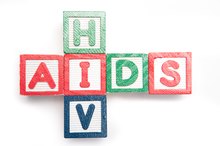Complications of Cellulitis
Cellulitis is a type of skin infection most commonly caused by staphylococcus and streptococcus bacteria, according to medical professionals with MedlinePlus 2. People with cellulitis can develop symptoms such as skin inflammation or discoloration, pain, fever, fatigue, or muscle aches 2. In the absence of appropriate treatment, people are at an increased risk of developing complications of cellulitis 23.
If you are experiencing serious medical symptoms, seek emergency treatment immediately.
Lymphangitis
The bacteria that cause cellulitis can spread to other regions of a person's body, such as the lymphatic system 2. Exposure of the lymphatic vessels to bacteria can cause inflammation, a complication of cellulitis called lymphangitis, explain medical experts with The Merck Manuals Online Medical Library 12. Affected people can develop red streaks across the affected skin region, and the lymph glands may appear enlarged or swollen. Antibiotic treatment is necessary to resolve lymphangitis complications in people with cellulitis, notes Merck 23.
Osteomyelitis
Derma Filler Side Effects
Learn More
Bacteria from the skin can spread into a person's bones, a complication of cellulitis called osteomyelitis, warn MedlinePlus health professionals 2. A bone infection can cause pain, redness and swelling within the affected body region. Additional osetomyelitis symptoms can include sweating, fever, chills or lower limb swelling. Without treatment, a bacterial bone infection can destroy a person's bone tissue.
- Bacteria from the skin can spread into a person's bones, a complication of cellulitis called osteomyelitis, warn MedlinePlus health professionals 2.
- Without treatment, a bacterial bone infection can destroy a person's bone tissue.
Gangrene
Untreated cellulitis can result in death of the affected skin or tissue, a complication called gangrene, report University of Maryland Medical Center health professionals 2. People with gangrene can develop dark or black patches of skin at the site of tissue death. Extensive gangrene may require limb amputation to resolve infection symptoms, states UMMC.
Meningitis
What Is the Difference Between Stasis Dermatitis & Cellulitis?
Learn More
People with untreated cellulitis on the face are at an increased risk of developing meningitis as a complication of this skin infection, reports MedlinePlus 2. Meningitis is an infection that develops within the membranes that surround and protect the brain and spinal column. This infection is life-threatening, notes MedlinePlus, and can cause symptoms of high fever, severe headache and stiff neck 2.
Sepsis
A bacterial infection of the bloodstream called sepsis can occur as a complication of cellulitis in certain people 2. According to Merck, sepsis is a potentially fatal infection that can cause:
- increased heart rate
- fever
- confusion
- chills
- lightheadedness in affected people
People who develop sepsis complications of cellulitis require immediate, emergency medical care to prevent additional medical problems 23.
Related Articles
References
- The Merck Manuals Online Medical Library: Cellulitis
- MedlinePlus: Cellulitis
- Mayo Clinic: Cellulitis Complications
- Raff AB, Kroshinsky D. Cellulitis: A review. JAMA. 2016;316(3):325-37. doi:10.1001/jama.2016.8825
- Brown BD, Hood Watson KL. Cellulitis. [Updated 2019 Nov 6]. In: StatPearls [Internet]. Treasure Island (FL): StatPearls Publishing; 2019 Jan-.
- Gunderson CG, Martinello RA. A systematic review of bacteremias in cellulitis and erysipelas. J Infect. 2012;64(2):148055. doi: 10.1016/j.jinf.2011.11.004.
- Elahi M, Sanchez PJ, Alqudah E, Antonara S. Invasive Haemophilus influenzae infections in children: A 10-year study. Open Forum Infect Dis. 2018;5(Suppl 1):S687. doi:10.1093/ofid/ofy210.1967
- Sullivan T, de Barra E. Diagnosis and management of cellulitis. Clin Med (Lond). 2018;18(2):160–163. doi:10.7861/clinmedicine.18-2-160
- American Academy of Dermatology. Cellulitis. 2018.
- Gunderson CG, Martinello RA. A systematic review of bacteremias in cellulitis and erysipelas. J Infect. 2012 Feb;64(2):148055. doi: 10.1016/j.jinf.2011.11.004.
- Habif, T. Bacterial Infections. Clinical Dermatology, 4th Edition. New York: Mosby, 2004: 236-262.
- Halpern, A., and Heymann. W. Bacterial Diseases. Dermatology. 2nd Edition. New York: Mosby, 2008: 1075-1084.
- Morris JG. Vibrio vulnificus infections. Calderwood SB, ed. UpToDate. Waltham, MA: UpToDate Inc.
Writer Bio
Rae Uddin has worked as a freelance writer and editor since 2004. She specializes in scientific journalism and medical and technical writing. Her work has appeared in various online publications. Uddin earned her Master of Science in integrated biomedical sciences with an emphasis in molecular and cellular biochemistry from the University of Kentucky College of Medicine.







